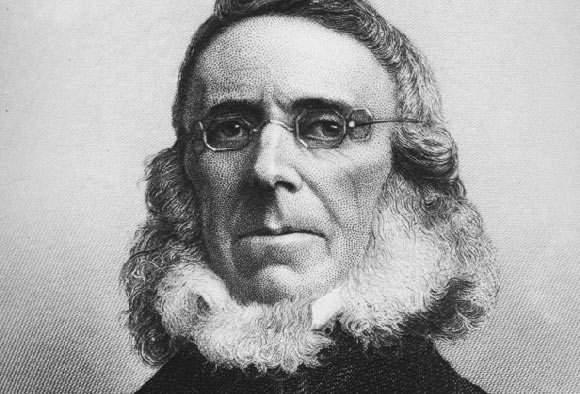Peter Cooper invented “Jell-O”
Peter Cooper was an American inventor, businessman, and philanthropist of the 19th century, born in New York City in 1791. Cooper did not receive much schooling and was apprenticed to his father at an early age. His father was initially a grocer by profession but his business went bankrupt when Cooper was 5. He learned a variety of skills from his father’s various business ventures, including hat-making, brewing and brick-making. None of these interested him, however, and he became an apprentice to a carriage maker.
Cooper began to invent things at an early age – his very first invention was a crank-operated washing machine that he invented at the age of 13. He was a serious-minded child and had strong values. After losing $10 on a lottery ticket (a considerable sum of money at the time) he realized the folly of these habits and avoided them all his life. He was also opposed to slavery, after an incident in his childhood when he saw two slaves being forced to beat each other.
Cooper was very successful during his apprenticeship as a coach maker and was offered a loan to establish his own business, but he declined this and chose to set up a business for manufacturing cloth shearing machines. He indulged in a variety of businesses from time to time when he saw a need in the market. These included a furniture factory, manufacturing glue and glass, a mining company and a grocery business.
At the age of 38, Cooper bought tracts of land in Baltimore which he meant to sell at a profit. However, the lack of available transport made this land commercially unviable. When his overseer suggested that there was plenty of iron ore on the land, Cooper decided to set up an iron business. Here he invented a process for rolling steel and used it to make rails for horse-driven trolleys. This later led to one of his most significant inventions, that is, the first steam-powered locomotive. He named it “Tom Thumb” due to its small size. Despite its size, his locomotive was extremely quick and powerful (due to the addition of a high-pressure boiler) and was able to successfully navigate through difficult terrain. Cooper demonstrated this locomotive to the shareholders of the Baltimore & Ohio Railroad Company, who were impressed and adopted his model. Cooper expanded his iron business to form the Trenton Iron Works in New Jersey.
In 1840, Cooper became a member of the municipal council of New York and was later encouraged to run for the presidential election of 1876, which he lost. He was 85 years old at the time, which makes him the oldest presidential candidate to date. One of his most well-remembered endeavors in philanthropy is the establishment of the Cooper Union in New York. He was deeply interested in education and wanted to contribute to it. Thus he set up the Cooper Union as an establishment that offered free education in practical fields such as mechanical engineering. He also founded a free reading room inside the Cooper Union that was open till 10 pm for working people to use it after working hours. The entire project cost $600,000 and attracted close to 2000 applicants for night classes when it first opened up.
Peter Cooper died in 1883 at the age of 92. The Peter Cooper Village apartment complex in Manhattan, the Peter Cooper Elementary School in New Jersey, the Peter Cooper Station post office, and Cooper Square in Manhattan have been named in his honor.
